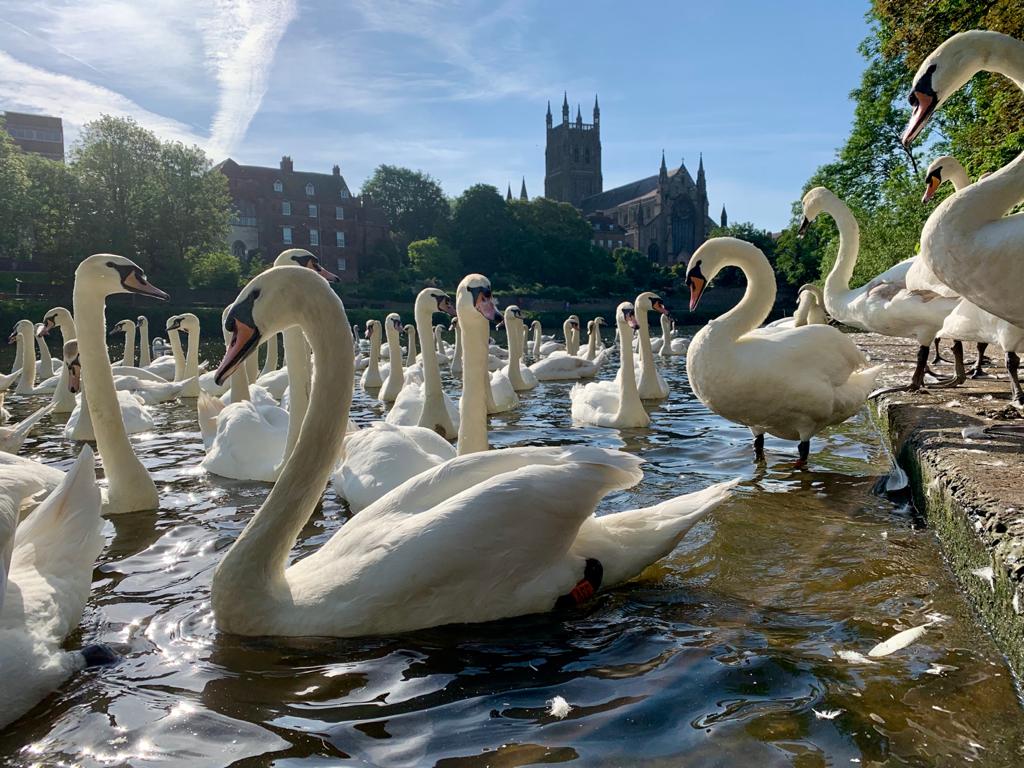Collision
Swans’ ancestors were around with the dinosaurs, and swans are not well adapted to the modern world. As one of the heaviest of birds they cannot rapidly change direction in flight, so modern structures like power lines, bridges and buildings, as well as traffic and trees, are one of the main causes of death in swans.
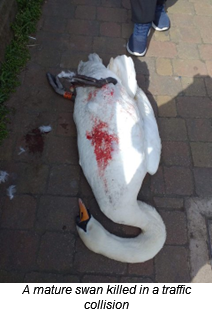
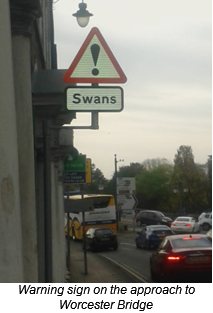
Worcester Bridge is a hazard to swans, as it crosses a part of the River Severn within the swan sanctuary. Swans flying along the river can be caught out if large vehicles interrupt their flight paths. Once, three swans flying together all hit the side of a bus. Sometimes collisions result in death, but sometimes there are lucky escapes too, when a swerving swan lands on the bridge, to be escorted back to the water by passers-by.
On the whole though, swans learn to fly higher over the bridge.
Worcestershire County Council has erected a warning sign on Bridge Street, on the westbound approach to the bridge, as visibility of the river is poor. Looking both ways and driving slowly is recommended when crossing the bridge!
Predation
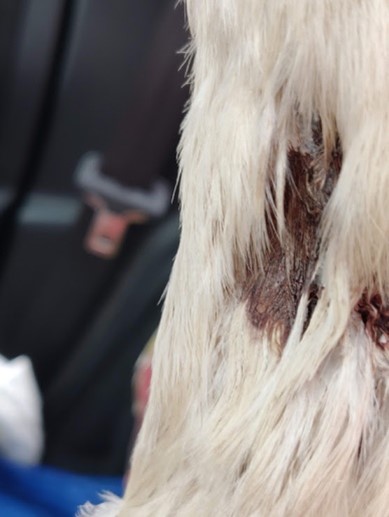
Swans are a food source for other wild creatures.
Small cygnets are vulnerable to foxes, otters, mink, rats, gulls, crows, herons, buzzards and pike.
Adults are vulnerable when sitting on the nest, when aged or unwell, or resting on land. Even mature, strong males may be killed.
Swans do sometimes survive an attack, like this one, injured by a fox at Temple Laugherne.
People
People cause harm through thoughtlessness or deliberate cruelty.
Rubbish causes wounds which may become infected, or may prevent swans from eating, leading to starvation.
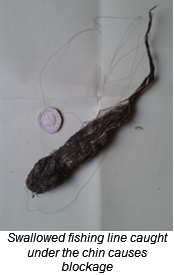
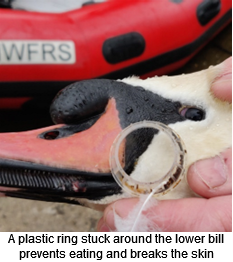
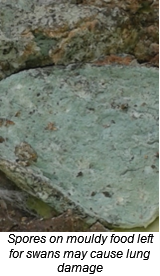
Other waste materials can lead to poisoning and disease.
Uncontrolled dogs frighten and can injure swans, either by direct attack, or by the swan hurting itself as it tries to get away. Swans are heavy birds that move slowly on land, and can’t take off quickly like ducks can.
Wounds caused by dogs are to the rear, back or wing of the swan, unlike those caused by foxes, which go for the neck and head.
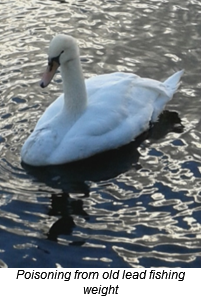
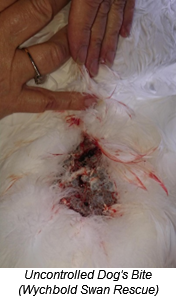
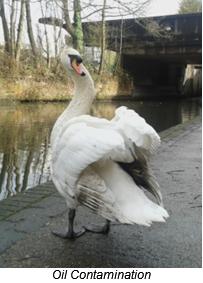
Every year swans are shot, battered and tormented. Some of this may be the result of fear in people who are approached by swans that have been made over-tame. Some of it will be sheer vandalism.
Swans
Swans are a threat to swans! Breeding pairs are territorial to preserve food supplies for their own young. If invaders do not heed the warning display (which they generally do), they run the risk of battering and drowning.
Disease
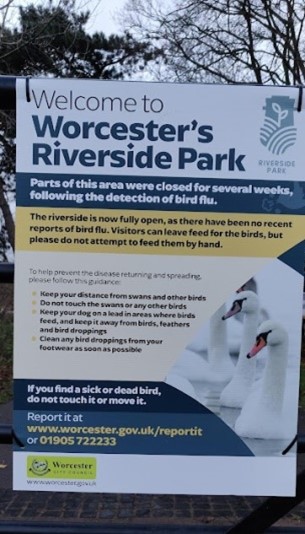
Avian Influenza has been the greatest threat recently. It is bought to the country each winter by migrating birds. Different strains in 2020/21 and 2021/22 bought more severe outbreaks than ever before. Swans on the river in Worcester suffered badly each time, with many deaths.
The risk to humans is low, but transmission to humans is possible, so it is important that we all follow Local Authority advice.
During outbreaks report dead swans.
Volunteers change footwear and use disinfectant to avoid taking droppings away from the river, and we have PPE for emergency use.
Avian Botulism is a bacterial disease leading to paralysis, which breaks out in hot, dry weather. Water levels and flow can be low, leading to stagnation and an increase in naturally ocurring bacteria. You can help by feeding only what swans can eat at a time, and never feeding meat products.
- If several swans in Worcester fall ill and die at once during the summer, report dead swans.
- Elsewhere, phone the Defra Helpline – 0345 933 5577.
- Further information: Avian Botulism.pdf (DEFRA)
Climate Change
Climate change is a double-edged sword for swans:
- Heavy rainfall and flooding makes it easier for swans to search for food, but winter avian influenza kills younger birds with no immunity.
- Long, hot and dry summers reduces the amount of vegetation some swans graze on.
- Increasing water use by the human population and low rainfall leads to lower river and reservoir levels, increasing the risk of disease.
